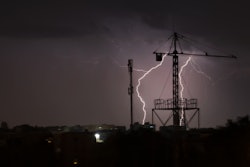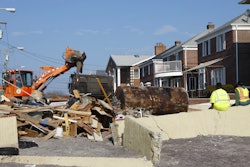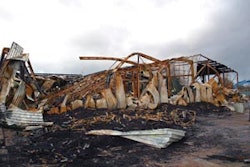
By Steve Dugger, Co-Founder & EVP of Operations of Buildertrend
Wildfires. Earthquakes. Hurricanes. Tornadoes. Hail storms.
Natural disasters can take many shapes — with level of severity and exposure varying greatly depending on location. Statistically, close to seven hurricanes strike the United States every four years, with a significant rise in this number in recent years. Major earthquakes happen less often but can also be devastating. Inland flooding is also becoming a more common occurrence, while persistent drought — especially in the West — puts a lot of states at risk for wildfires.
The month of June marks the beginning of hurricane season — and with it, the perfect time to begin planning for when the next disaster could strike, no matter the location. Instead of waiting for disaster to be the catalyst for action, planning ahead can be the difference between mayhem and calamity or safety and security for your projects, employees and business.
Creating a disaster plan may feel like a massive and complex undertaking on the chance a disaster strikes, but when the alternative is not keeping teams and projects safe, it’s always better to be safe than sorry. Below are four steps to make the process easier:
1. Create a team
Start by creating a team comprised of representatives from each department in your construction company. This usually entails members from the administrative side of the business, the on-site construction team and management. Select individuals who will be able to contribute different perspectives; doing so will identify all of the business’s possible vulnerabilities during a disaster.
2. Plan ahead
Not every natural disaster can be predicted. Even those that can be forecast in advance can be unreliable. For example, hurricanes and winter storm warnings can change at the last minute. Still, planning for the worst will help project managers identify possible weak points and create a workable plan that ensures the safety of all projects, while minimizing potential damage.
Running the Business: Preparing for Disaster
Construction sites heighten the risks that people face during natural disasters, and materials on site can become dangerous debris. Minimize those risks by making sure materials and equipment have a place to be properly stored. Securing them prior to a natural disaster can save thousands in potential damages and losses. Additionally, be cognizant of any regulatory rules that must be followed if a plan has to be implemented.
3. Cascade emergency procedures
The key to the successful implementation of a disaster plan hinges on effective communication with your team.
Take the time to keep the team in the know by discussing and cascading the emergency plan throughout the organization. Consider on-site hazards and who needs to be kept informed of changes that might impact the safety of subcontractors and laborers. Review company procedures with relevant subcontractors, as well as suppliers.
4. Reevaluate the recovery plan in the disaster aftermath
Once the natural disaster has passed, it’s time to assess the aftermath. The first step is to ensure each member of the team is safe before visiting jobsites to take stock of the damage. Next, as soon as possible, take immediate steps to stabilize and secure projects. Develop a workback plan to schedule repairs with priority given to address urgent safety issues.
Is Your Business Prepared for a Hurricane?
Once all of these issues have been addressed, and projects are moving back to normal, it’s time to reevaluate the team’s recovery plan. By questioning each stage of the emergency action plan, project managers can identify the most effective parts of the plan and where improvements can be made. For example, did everyone receive the instructions or were there loopholes due to communication gaps?
Be as thorough as possible. Safety should never be underrated.
Construction technology can help make the planning process easier
Just like any project or plan, disaster planning can get complicated. Project managers should consider implementing a centralized, cloud-based system to keep important documents safe from natural disasters and instantly accessible in the event an evacuation is necessary.
A cloud-based system makes it easier to determine what equipment needs to be moved, which materials need to be protected, and other action steps critical to minimizing damage to jobsites. It can also help project managers and subcontractors get right back to work once the all-clear signal is given by automatically updating project timelines, assignments and to-do lists.
Operating without a plan for a natural disaster works until it doesn’t. Don’t get caught unaware.
Be proactive and take steps to plan out communication and recovery processes to minimize damage, costs and risk, just in case disaster does strike.



















